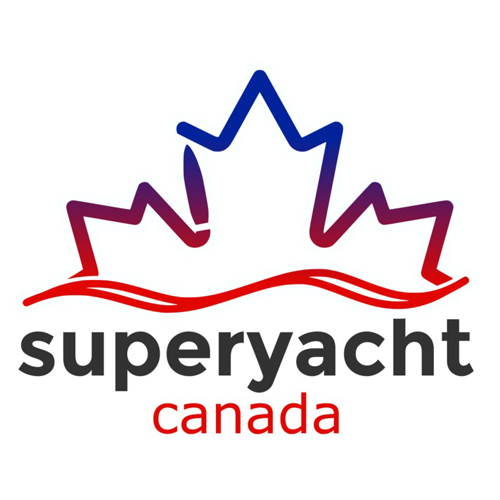“We manage to do everything, but it’s not like going to Feadship or the big American yards. But we can do anything around 200 feet and anything up to that is a piece of cake.”
It’s clear that while the processes employed by these two yards are very different, there is a mutual practicing of diligence that has retained a loyal client base and confirmed them as the nucleus of the US new-build market.
‘Folding the map over us’ While companies across the water may prefer to operate under the radar, a group of proactive stakeholders in the Canadian province of British Columbia is taking great steps to raise awareness of the region’s immense potential for superyacht cruising and operation. Despite the vastness of the coastline (roughly 17,000 miles), an infrastructure network to reassure visitors has emerged in the south, with Victoria International Marina at its epicenter representing the gateway to these stunning cruising grounds.
Victoria International Marina, custom-built for superyacht visitation, opened in 2018. Featuring the service proposition and amenities demanded by superyacht owners and guests, it’s the obvious port of call for yachts looking to embark on a journey of this epic expanse. However, one can sympathize with any trepidation that may encumber those planning to journey further north – with a presupposed lack of infrastructure being the obvious issue.
“Chartering is a thing here,” asserts renowned naval architect Greg Marshall, who adds that a current client is fond of the area but struggles to find an appropriately sized vessel. “I was on board Big Fish [a Marshall design] at the marina for dinner recently and the owners who bought her five years ago had put on around 300,000-plus miles, including 43,000 miles continuously from Singapore all the way around the North Pacific. Their plan was to fast track from Alaska to San Diego but they ended up doing another 20,000 miles in BC across three months. Now they want to come back because it was their favorite place of all, even though they didn’t know about it. It’s as if people fold the map over us.”
But this is boating country and hidden away in all manner of nooks and crannies along the coastline is a legitimate network of servicing expertise that has evolved from high demand in the pleasure-boating sector to adapt to the superyacht market.
Drew Irwin acquired Philbrook’s Boat Yard in 1987 and while I must admit to not knowing of Irwin’s operation prior to my visit, he is something of a luminary around these parts. The yard has grown to accommodate the needs of the vessels in its vicinity and, as such, is not the ordered yard a European client might expect but rather a labyrinthine network of workshops and dry docks. Still, when we arrive, they are awaiting the arrival of a 30.5m Ocean Alexander boat for a hull-extension project. And, as if to testify to the longevity of this company’s operation, while navigating the maze of workspaces I stumble across an archive of early editions of The Yacht Report.
“You have to be a little creative [in British Columbia],” says Irwin. “If getting a very big boat out of the water is one thing, we go to a shipyard and contract with them; if major diesel work has to be done there are truck guys in the neighborhood and we align with them. We manage to do everything, but it’s not like going to Feadship or the big American yards. But we can do anything around 200 feet and anything up to that is a piece of cake.
“I visit yards all around the world. I went to Feadship and two yards in Mallorca last fall and we get a sense of what’s going on in the world and adapt it. We did get the rights to do Feadship warranty work, which would include paintwork, two years ago, although we haven’t seen one yet!”
After giving us ‘the nickel tour’, Irwin drops into the conversation that he was set to acquire an adjacent marina site in the next quarter, “which will give us 200 feet of dock and lots of depth, allowing us to work with another 400 feet of length, so we’ll expand our footprint and build some shops and offices. We just keep rolling down the street”.
While he describes it as ‘a hamster maze’, rather than the ‘rat maze’ that is Philbrook’s, Raven Marine’s Nelson Hill, who is based further north along the inland coast at Canoe Cove, operates in a similar environment to that of Irwin. Although on a smaller scale, there is the same ‘parochial STP’ feel about this place; for those familiar with the Mediterranean refit and repair space, that is a cluster of contractors. Indeed, Raven Marine is an integrator of systems from stern to bow and can call upon complementary expertise among Canoe Cove’s myriad companies.
“It’s snowballed into a complete service company, catering for mainly larger yachts, but mostly catering to large yachts in a concierge style; you call me and whatever you need, I’ll take care of it through my network,” says Hill.


Recent Comments